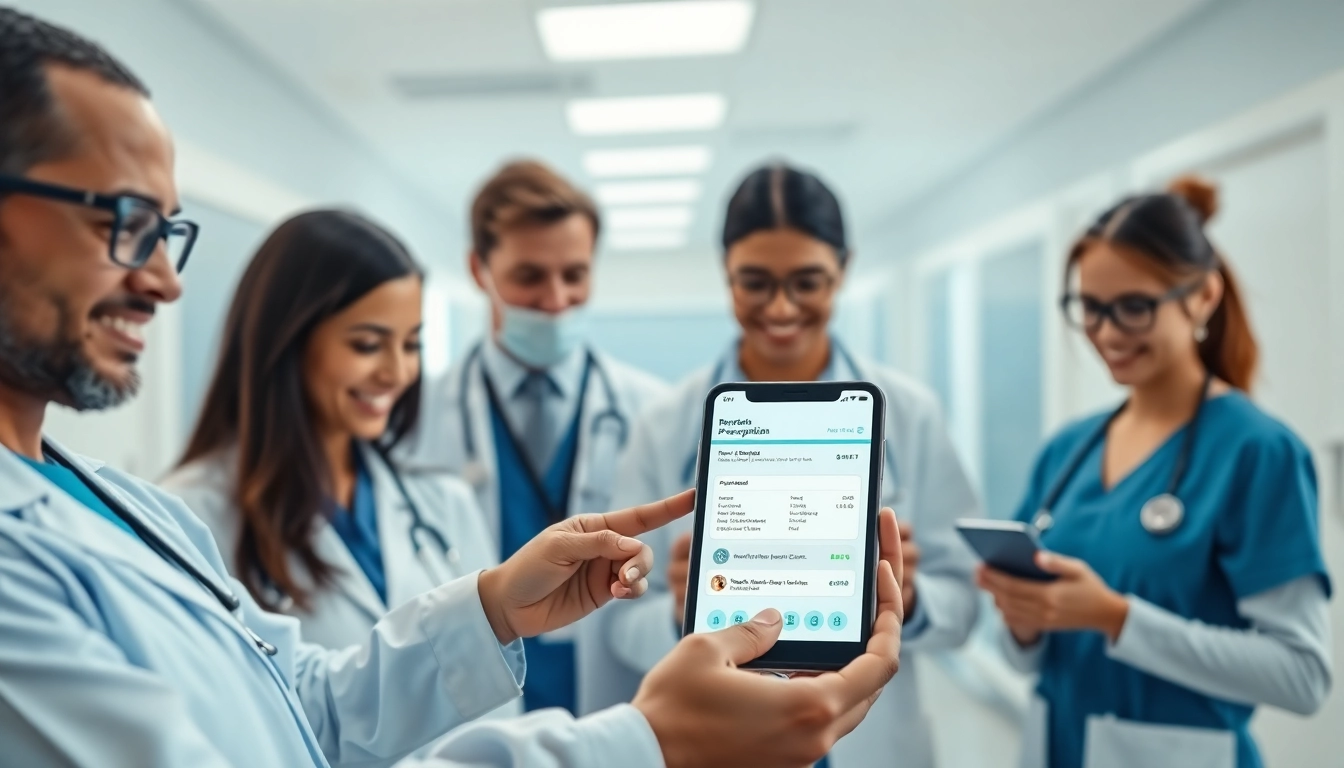Understanding the Essentials of Top Rated Prescription Applications
In an age where technology is fundamentally reshaping the healthcare landscape, the integration of mobile solutions has become essential for improving patient care. One of the most transformative elements in this space is the emergence of top rated prescription applications. These applications streamline various processes related to prescription management, offering conveniences that benefit both healthcare providers and patients alike. In this article, we will explore the role, features, benefits, challenges, best practices, and future trends of prescription applications in detail.
The Role of Prescription Applications in Modern Healthcare
Prescription applications are fundamentally designed to improve the efficiency and efficacy of the prescribing process. By digitizing the way prescriptions are managed, they facilitate timely communication between healthcare professionals and their patients. Patients can now access their medication schedules, renew prescriptions, and engage with their healthcare providers in a more interactive manner. This technology not only enhances patient experience but also optimizes workflow for practitioners, allowing for better allocation of resources.
Key Features of Effective Prescription Applications
When evaluating a prescription application, several key features should be taken into account to ensure it meets the needs of both healthcare providers and patients:
- User-Friendly Interface: A simple and intuitive design that facilitates ease of use for all age groups.
- Real-Time Tracking: Up-to-date medication tracking that informs both patients and providers about medication adherence and refill status.
- Secure Messaging: Features that allow for secure communication between healthcare providers and patients for discussing concerns, prescription changes, and more.
- Integration Capabilities: The ability to sync with electronic health records (EHR) and other systems for seamless data sharing.
- Cost Transparency: Options that provide information on drug prices to help patients make informed decisions.
Choosing The Right Application for Healthcare Needs
Selecting the right prescription application is critical. Healthcare facilities should start by assessing their specific needs and the requirements of their patients. Factors to consider include the types of medications frequently prescribed, existing systems that need integration, and the level of technical support available. Additionally, feedback from both healthcare staff and patients can provide valuable insights into which applications may be most effective.
Benefits of Using Top Rated Prescription Applications
Improving Efficiency in Prescription Management
One of the most significant advantages of using top rated prescription applications is the improvement in the efficiency of prescription management. Traditional prescription processes are often plagued by delays, miscommunication, and errors. By leveraging the capabilities of mobile applications, healthcare providers can ensure a smooth, accurate, and prompt prescription process. This efficiency can save time during patient visits, reduce the likelihood of medication errors, and ultimately lead to better patient outcomes.
Enhancing Patient Engagement and Compliance
Patient engagement is crucial for successful treatment outcomes. Prescription apps encourage active participation by allowing users to track their medication intake, set reminders for doses, and access educational resources about their medications. By nurturing more informed patients, these applications increase adherence to treatment plans, thereby promoting better health literacy and encouraging consistent engagement with healthcare providers.
Streamlining Communication Between Healthcare Providers
Communication among healthcare providers is essential for delivering cohesive patient care. Top rated prescription applications facilitate the seamless sharing of prescription information, diagnostic data, and patient histories among multiple providers. This integration helps to eliminate redundancies and ensures that everyone involved in a patient’s care is on the same page, ultimately leading to more coordinated health management.
Challenges of Implementing Top Rated Prescription Applications
User Adoption and Training Issues
Implementing any new technology comes with the challenge of user adoption. Healthcare professionals may resist adopting a new application if they are accustomed to traditional methods. Comprehensive training and ongoing support are essential to help staff become proficient and comfortable with the new system. This often includes workshops, user manuals, and tutorial videos that outline the features and benefits of the application.
Data Security and Privacy Concerns
With the increasing digitization of healthcare, concerns surrounding data security and privacy cannot be overlooked. Prescription applications must comply with regulations such as HIPAA to ensure that patient data is handled securely. This includes strong encryption protocols, regular security audits, and a commitment to safeguarding sensitive health information from unauthorized access.
Integration with Existing Healthcare Systems
The compatibility of prescription applications with existing EHR systems is critical for effective use. Many healthcare facilities use a variety of software tools, which can complicate the integration. Therefore, selecting an application that offers flexible integration options and comprehensive support is essential for a smooth transition and continued usability.
Best Practices for Maximizing Top Rated Prescription Applications
Regular Updates and Maintenance of Applications
To remain effective and secure, prescription applications require regular updates and maintenance. This not only includes app performance improvements but also adapting to any changes in health regulations or feedback from users. Healthcare institutions should have a dedicated team to monitor the application’s performance and implement updates in a timely manner.
Gathering User Feedback for Continuous Improvement
User feedback is invaluable in the iterative development of prescription applications. Gathering insights from both practitioners and patients can highlight areas for improvement and inform ongoing training initiatives. Regularly scheduled surveys, focus groups, or user testing sessions can help ensure the application meets evolving needs and expectations.
Training Staff Effectively to Use the Applications
Investing in robust training programs is key to the successful implementation of prescription applications. This should encompass not only initial training but also timely retraining sessions to address updates or address any user concerns. Providing staff with easy access to support resources and creating a culture of continuous learning can empower them to make the most of the application’s features.
The Future of Top Rated Prescription Applications
Emerging Trends in Healthcare Technology
The future of healthcare is closely tied to the advances in technology, and prescription applications are at the forefront of this transformation. Trends such as telemedicine integration, wearable technology compatibility, and increased focus on personalized medicine are beginning to influence how prescriptions are managed. Developers are working to harness data analytics, enabling predictive insights into patient behavior and adherence patterns.
The Impact of AI and Machine Learning on Prescription Management
Artificial Intelligence (AI) and machine learning are poised to revolutionize prescription management. By analyzing large datasets, these technologies can identify trends and predict patient needs based on historical behavior. This predictive capability can lead to proactive treatment plans, reducing unnecessary hospital visits and improving outcomes through timely interventions.
Predictions for the Evolution of Prescription Applications
As healthcare technology rapidly advances, we can expect prescription applications to become more sophisticated and integrative. Future applications will likely feature advanced AI capabilities, enhanced user interfaces, and increased interoperability with other healthcare platforms. The focus will be on creating a fully integrated healthcare experience that prioritizes patient-centered care and operational efficiencies.



